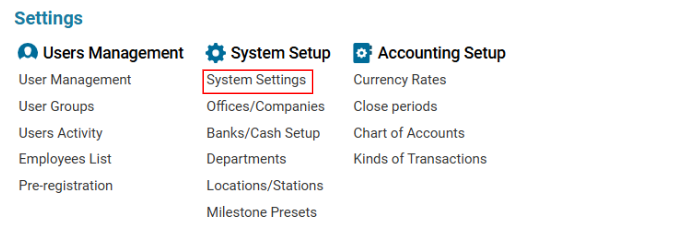AWB Priority Rules
Navigation To AWB Priority Rules:
Navigate to the Settings section and under System Setup click the “System Settings” button.

Then navigate to the Cargo section and click the “AWB Priority Rules” button.

Overview
The AWB Priority Rules page is used to manage prioritization logic for Air Waybills (AWBs) based on customer profiles, cargo types, and configurable groups. This functionality supports efficient cargo handling and streamlined logistics operations.
Interface Overview
Main Table (Center Panel)
This table displays all defined AWB priority rules with the following columns:
Column | Description |
|---|---|
Prior | The priority level (higher number may represent higher or lower priority depending on business logic). |
Label | Identifier or name for the rule (e.g., TEST12, test3). |
Customer | The associated customer or company for which the rule applies. |
Commodity Type | Type of cargo the rule applies to (e.g., GENERAL CARGO). |
Extra Data | JSON-style object storing additional metadata such as load group or color. |
Right Panel: Rule Editor
This section allows editing or creating new AWB priority rules.
Fields
Field | Description |
|---|---|
Prior (required) | Numerical value denoting the priority of the rule. |
Label | Text label to identify the rule. |
Group | The cargo group or internal classification (e.g., A, G, 5). |
Customer Type | Dropdown to select the type (e.g., Customer, Agent). |
Customer | Customer selection dropdown with visual highlighting (e.g., NEWCUSTOMER_Vika). |
Commodity Type | Type of cargo, e.g., "GEN - GENERAL CARGO". |
SHC Codes | Special Handling Codes related to the cargo. |
Color | Optional color tag to highlight rule entries visually. |
Top Buttons
🟩 Update – Save changes to the selected rule.
➕ New – Clear the form for creating a new rule.
🗑️ Delete – Remove the selected rule from the system.
Functionality Highlights
The search bar allows users to filter rules by label, customer, commodity, or other fields.
Selecting a rule from the table auto-populates the right-side form for quick editing.
Extra Data can store additional parameters in JSON format for system-level logic.
